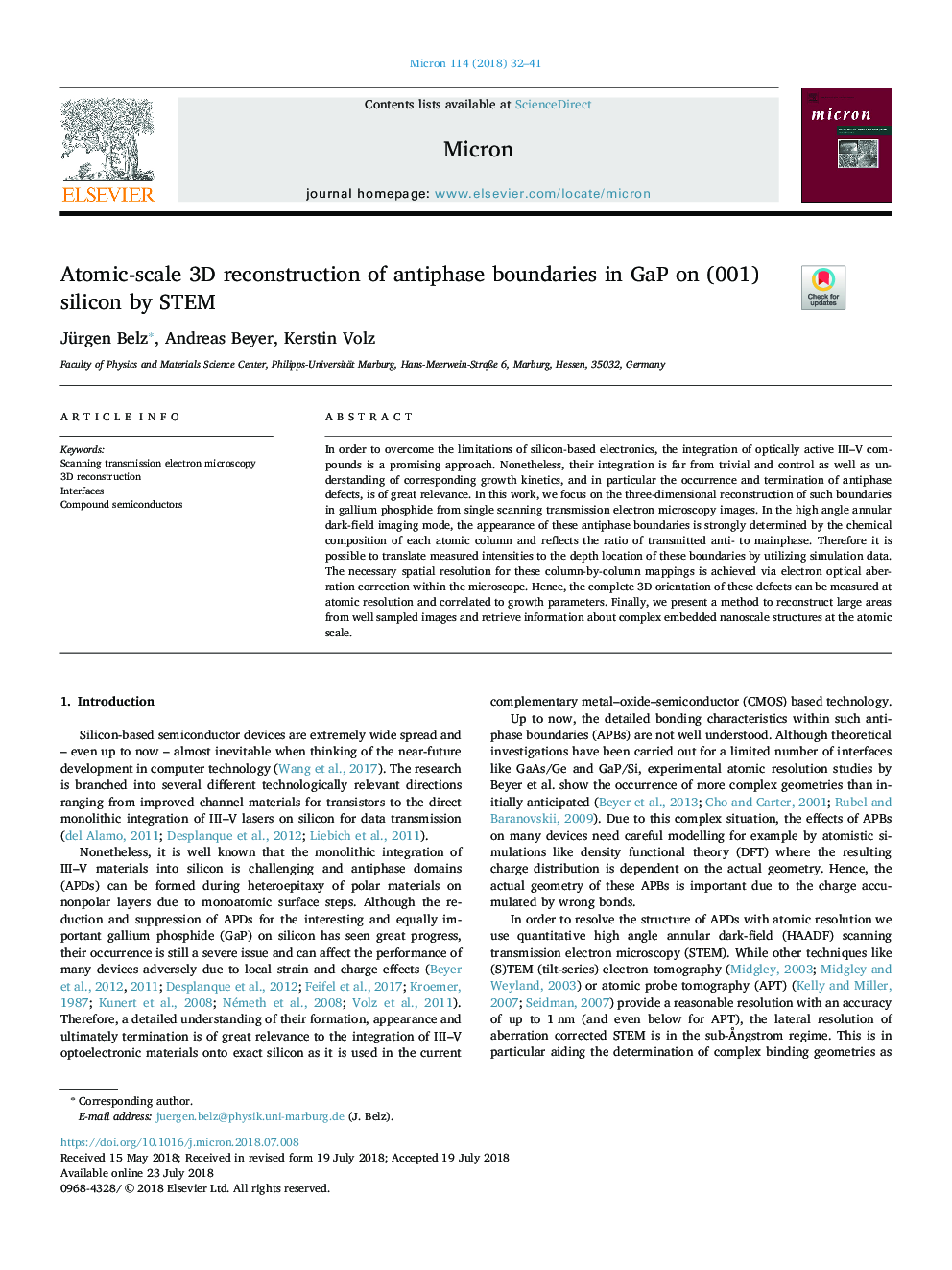| Article ID | Journal | Published Year | Pages | File Type |
|---|---|---|---|---|
| 7985895 | Micron | 2018 | 10 Pages |
Abstract
In order to overcome the limitations of silicon-based electronics, the integration of optically active III-V compounds is a promising approach. Nonetheless, their integration is far from trivial and control as well as understanding of corresponding growth kinetics, and in particular the occurrence and termination of antiphase defects, is of great relevance. In this work, we focus on the three-dimensional reconstruction of such boundaries in gallium phosphide from single scanning transmission electron microscopy images. In the high angle annular dark-field imaging mode, the appearance of these antiphase boundaries is strongly determined by the chemical composition of each atomic column and reflects the ratio of transmitted anti- to mainphase. Therefore it is possible to translate measured intensities to the depth location of these boundaries by utilizing simulation data. The necessary spatial resolution for these column-by-column mappings is achieved via electron optical aberration correction within the microscope. Hence, the complete 3D orientation of these defects can be measured at atomic resolution and correlated to growth parameters. Finally, we present a method to reconstruct large areas from well sampled images and retrieve information about complex embedded nanoscale structures at the atomic scale.
Keywords
Related Topics
Physical Sciences and Engineering
Materials Science
Materials Science (General)
Authors
Jürgen Belz, Andreas Beyer, Kerstin Volz,
